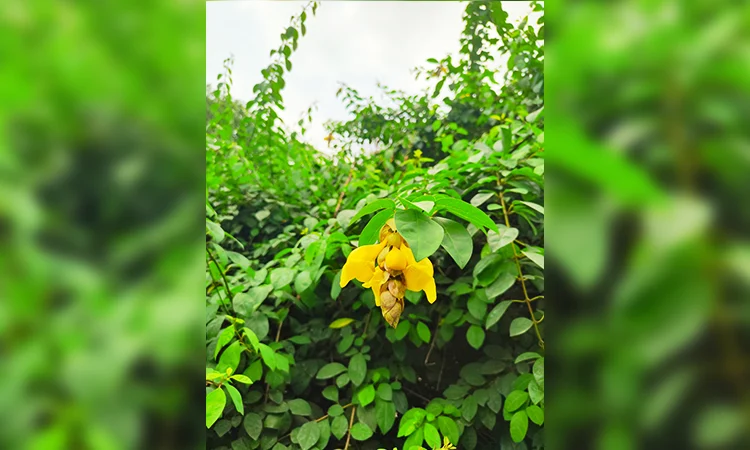News Flash

By Mahamudur Rahman Nazid
DHAKA, May 18, 2025 (BSS)- Strolling through Ramna Park, the green heart of Dhaka, one may come across delicate yellow blossoms dangling like golden earrings from tree branches.
This striking flower, locally known as ‘Bhadra’, flourishes from early summer to autumn, with peak blooms in the Bangla month of Bhadra.
Though native to Southeast Asia, this ornamental beauty is rare to find in ordinary gardens, making its presence in Ramna Park all the more special. Its scientific name is Gmelina Arborea. English name of the flower is Beechwood and it belongs to the family of Verbenaceae.
Originally native to Southeast Asia, this plant has become a popular ornamental choice in regions such as India, the Philippines, Mauritius, Kenya, and Tanzania. While it can be spotted in Dhaka’s Baldha Garden and Ramna Park, it remains as a rare to find in typical flower gardens.
The shrub-like flowering plant is creeping and thorny like a garden plant. The color of the flower is yellow. The tree bears fruit after flowering. The fruit is shaped like a cluster. The branches bend downwards like a vine and the yellow-encircled flower hangs at the very front of them.
When viewed from a distance, it seems as if the yellow flower is hanging like an earring. This flower is rarely seen in our country. Therefore, it can be called a rare flower.
The Bhadra flower is not just admired for its beauty— it also holds medicinal value. Extracts from its fruit are used to treat skin conditions.
This captivating flower graces the landscape from early summer until winter begins, though it requires special care in colder regions due to its low tolerance for chilly weather. While it can be propagated through stem cuttings or seeds, its spread is slow, as each fruit contains only a single seed.
Omar Farooq, a regular exerciser at Ramna Park, said, "I come to the park regularly but I never loked at the Bhadra tree before. When I first saw the Bhadra flower, my eyes were caught. I have never seen such a hanging yellow flower before. It seemed like an earring of the nature. Today I took a picture of the flower.”
“I learned the name of the plant from the nameplate," he added.
Professor Dr Shahriar Ahmmed, Chairman of the Department of Botany at Jagannath University, highlighted the significance of the Bhadra tree in Bangladesh’s biodiversity, saying its vibrant yellow blossoms not only enhance the landscape but also hold medicinal value, reflecting the country’s botanical heritage.
While the tree has largely vanished from urban spaces, its continued presence in locations like Ramna Park offers hope for its preservation, he noted.
He further said in Bangladesh, this tree mainly grows in warm and humid regions and it is found naturally in Chattogram, Chittagong Hill Tracts, Sylhet and some other districts.
Mentioning that some plant lovers and collectors of medicinal plants also plant this tree in their gardens, he said the fruit of the tree is capsule-shaped and contains small seeds.
“In traditional medicine, various parts of the Bhadra tree, including its leaves, are used to treat a range of ailments. It is particularly valued for soothing insect bites, reducing swelling, and addressing minor skin issues,” he added.
Regarding the agricultural potential of the flower tree, Shahriar said, "It has commercial potentials as an ornamental plant. Through planned cultivation, it can be a new addition to the nursery industry.”